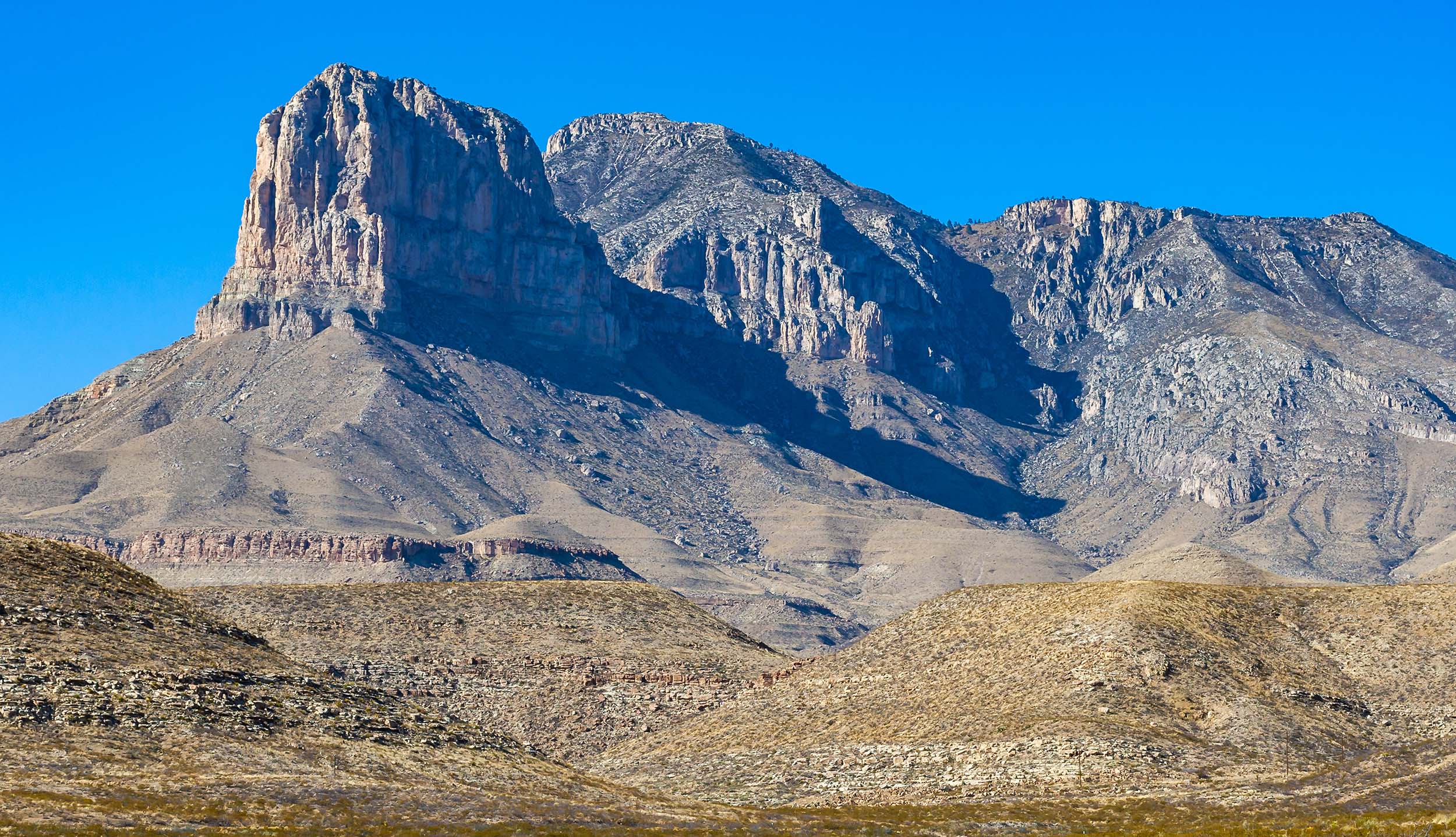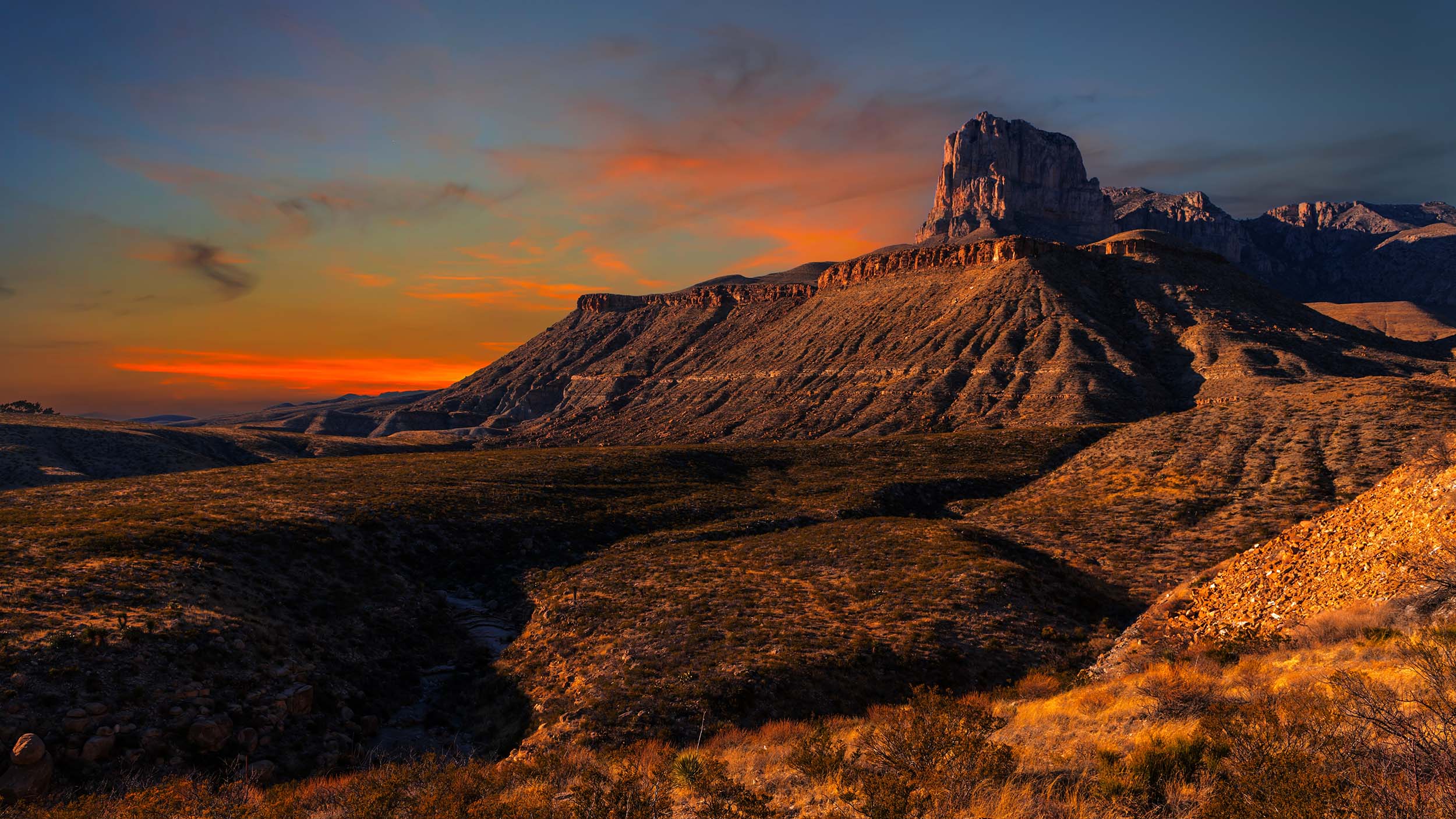Park Information Quick Facts
Location: Texas
Park Size: 86,416 Acres
Time Needed: 2-3 days
Best Season: Spring or Fall
Must Do: Rafting
Pro Tips: The park’s elevation and dry conditions can make the heat feel intense, even in cooler months. Many of the trails, such as the challenging Guadalupe Peak Trail, require a solid physical effort and may take several hours
Visitor Centers
Guadalupe Mountains National Park has two primary visitor centers that provide valuable information and services to park visitors. The Pine Springs Visitor Center, located near the park’s main entrance off U.S. Highway 62/180, is the park’s primary hub. It offers exhibits about the park’s natural and cultural history, including its geology, wildlife, and the history of the early ranchers in the area. The center also features a park store with maps, books, and souvenirs, and a helpful staff ready to provide information about trails, conditions, and any seasonal events. Restrooms and picnic areas are available outside the center, making it a good place to stop before beginning your exploration of the park.
Plan Your Guadalupe Mountains Adventure Today!
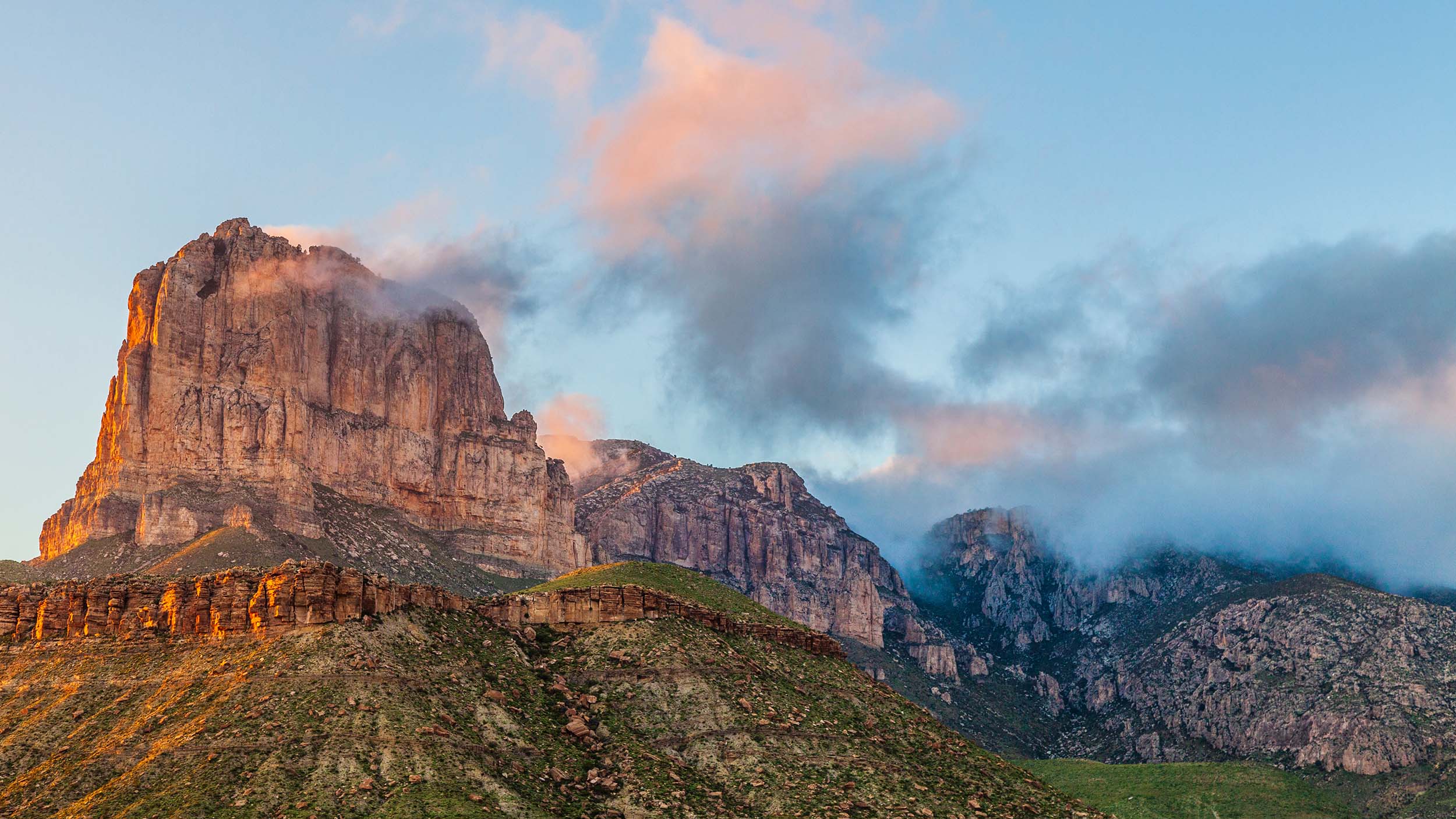
Getting There
How to Travel to Guadalupe Mountains National Park
Getting to Guadalupe Mountains National Park involves traveling to a remote area of western Texas, so it’s important to plan your route carefully. The park is located about 110 miles east of El Paso, Texas, and is accessible by car via U.S. Highway 62/180. The nearest large airport is in El Paso, where visitors can rent a car for the approximately two-hour drive to the park. Alternatively, if you’re driving from a nearby state or city, the park is located roughly 60 miles west of Carlsbad, New Mexico, making it a good stop if you’re traveling through the region. Major highways leading to the park include U.S. 62/180 and New Mexico Highway 137, which offer scenic views of the surrounding Chihuahuan Desert and mountains.
Once you’re in the vicinity of the park, there are several access points and parking areas for visitors. The primary entrance is located near the Pine Springs Visitor Center, just off Highway 62/180. This is the best place to start your visit, where you can gather information, purchase maps, and plan your activities. Keep in mind that while the park has paved roads, the terrain around the park can be rough, and some backcountry roads may require a high-clearance vehicle, particularly if you’re venturing off the main roads. If you’re planning to camp or stay in the park’s backcountry, make sure to secure permits in advance, as spaces can fill up, especially during peak hiking season.

Camping
Pine Springs Campground
- Location: Near the park’s main entrance on U.S. Highway 62/180.
- Number of Sites: 20 sites.
- Amenities: Picnic tables, fire rings, and vault toilets. Water is available at the nearby visitor center, but not directly at the campground.
- Reservations: This campground is first-come, first-served.
- Best For: Visitors wanting easy access to popular trails like the Guadalupe Peak Trail and those who prefer a more developed campsite close to park amenities.
Dog Canyon Campground
- Location: In the northern part of the park, accessible via a gravel road off U.S. Highway 62/180.
- Number of Sites: 4 sites.
- Amenities: Picnic tables, fire rings, and vault toilets. No potable water is available here, so campers should bring their own water.
- Reservations: This campground is also first-come, first-served.
- Best For: Those seeking a more secluded camping experience, as it’s quieter and less crowded than the Pine Springs Campground. Ideal for visitors exploring the northern side of the park or seeking more privacy.
Backcountry Camping
- Location: Throughout the park, away from developed areas.
- Permit: Required for backcountry camping. Permits are available at the Pine Springs Visitor Center or online.
- Amenities: None, as these are primitive sites with no facilities. Campers must be self-sufficient, bringing water, food, and necessary gear.
- Best For: Adventurous campers looking to explore the park’s remote areas and enjoy the solitude of the wilderness.
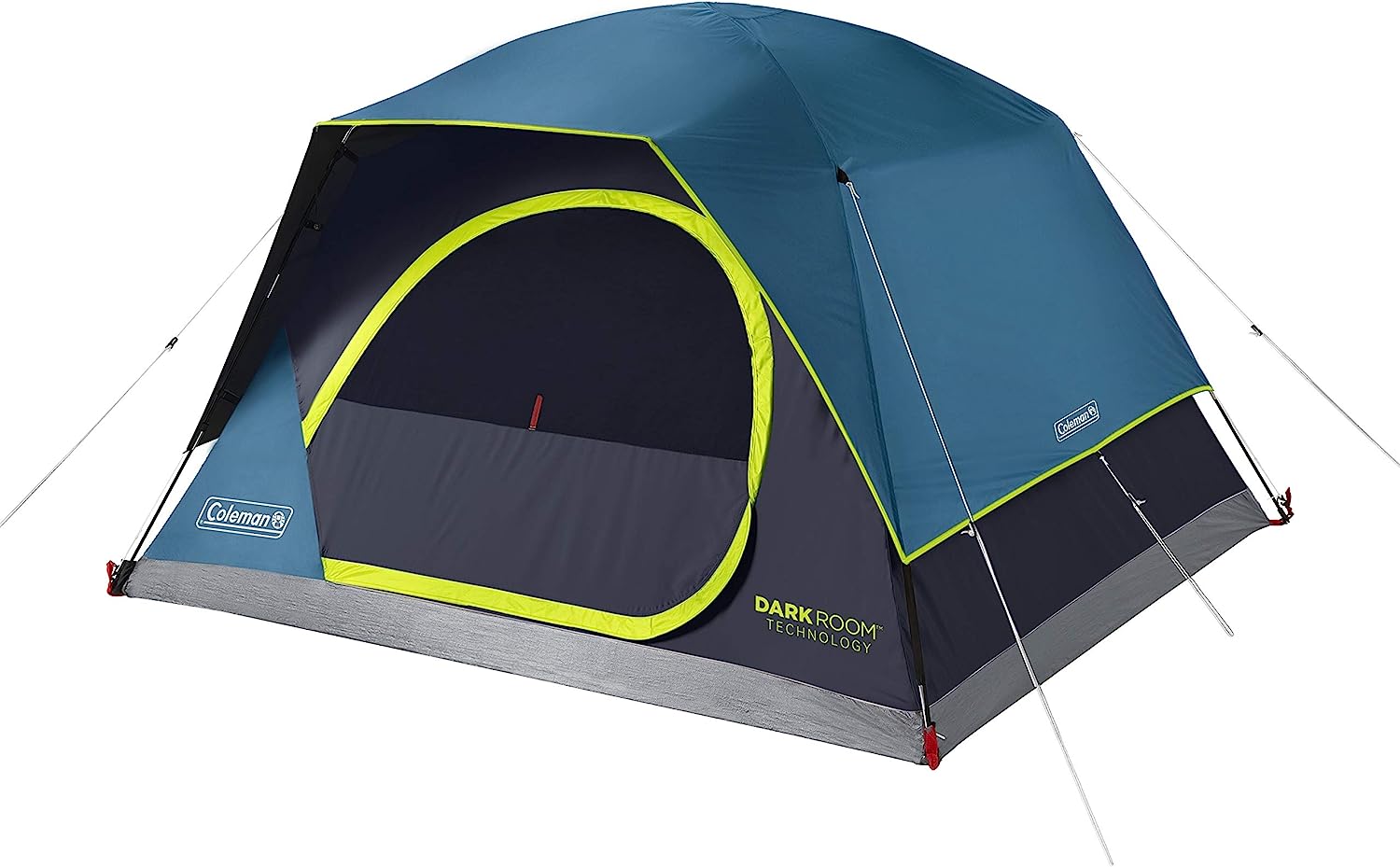

-
Prepare for Extreme Weather: The weather in Guadalupe Mountains National Park can vary drastically, especially if you’re camping at higher elevations. Temperatures can be hot during the day but drop significantly at night, even in summer. Be sure to pack layered clothing, including warm gear for evenings, and check the weather forecast before you go. In winter, snow and icy conditions are possible, so be ready for cold weather camping and adjust your plans accordingly.
-
Bring Extra Water and Supplies: Water sources are limited, and there are no hookups or potable water available at the campgrounds, so you’ll need to bring sufficient water for your entire stay. A general rule of thumb is to carry at least one gallon per person per day, especially if you’re planning any hikes. It’s also a good idea to bring extra food, sunscreen, and a first-aid kit, as the park is remote and services are few.
-
Know the Trail Access and Leave No Trace: Guadalupe Mountains is home to some challenging and remote hiking trails, so it’s important to be prepared if you’re venturing out. Make sure to familiarize yourself with trail conditions and know your limits. If you’re backcountry camping, follow Leave No Trace principles—pack out all waste, minimize campfire impact, and avoid disturbing wildlife. Always stay on designated trails and campsites to help preserve the natural beauty of the park.
Popular Hiking Trails
Guadalupe Peak Trail
- Distance: 8.4 miles round trip
- Elevation Gain: 3,000 feet
- Difficulty: Strenuous
- Description: The park’s most popular and challenging trail, this hike leads to the highest point in Texas, Guadalupe Peak (8,751 feet). The trail offers stunning panoramic views of the surrounding desert and mountain ranges. It’s a strenuous hike, requiring a full day, so be prepared with plenty of water and snacks.
El Capitan Trail
- Distance: 2.2 miles round trip
- Elevation Gain: 500 feet
- Difficulty: Moderate
- Description: This trail offers excellent views of the iconic El Capitan, a prominent peak that rises dramatically above the surrounding desert. The hike is relatively short but offers great photographic opportunities, especially at sunrise and sunset. The trail ends at a viewpoint with sweeping vistas.
McKittrick Canyon Trail
- Distance: 4.8 miles one way (to the Grotto)
- Elevation Gain: 1,000 feet
- Difficulty: Moderate
- Description: This trail takes hikers through the picturesque McKittrick Canyon, known for its vibrant fall foliage. The trail climbs gradually, offering beautiful views of the canyon walls and the lush vegetation along the creek. The Grotto, located about 4.8 miles from the trailhead, is a popular destination for hikers.
Bowl Trail
- Distance: 1.4 miles one way
- Elevation Gain: 1,400 feet
- Difficulty: Strenuous
- Description: The Bowl Trail provides a challenging ascent from the McKittrick Canyon Trailhead to the Bowl, a high basin surrounded by cliffs. The trail is steep and rocky, but it offers incredible views of the surrounding mountains and is less crowded than some of the more popular trails.
Devil's Hall Trail
- Distance: 4.2 miles round trip
- Elevation Gain: 500 feet
- Difficulty: Moderate
- Description: This trail takes hikers through the scenic Pine Springs Canyon and into the narrow, dramatic Devil’s Hall, a rock corridor that was carved by the flow of water. The trail is moderately challenging, with a few rocky sections, but rewards hikers with unique geological formations and beautiful canyon views.
Frijole Ranch Loop Trail
- Distance: 2.8 miles round trip
- Elevation Gain: 200 feet
- Difficulty: Easy to Moderate
- Description: This trail takes you around the historic Frijole Ranch, offering a glimpse into the area’s early settler history, as well as beautiful desert and mountain scenery. The trail is relatively flat, making it a great choice for families or those looking for a shorter, more leisurely hike.
Tejas Trail
- Distance: 6.5 miles one way
- Elevation Gain: 3,000 feet
- Difficulty: Strenuous
- Description: This is a difficult, one-way trail that climbs from the Pine Springs Campground up to the Guadalupe Ridge Trail. It’s a great option for more experienced hikers who want to connect to the higher, more remote areas of the park. The trail offers expansive views and diverse terrain, from desert to forested slopes.
Salt Basin Overlook Trail
- Distance: 2.6 miles round trip
- Elevation Gain: 300 feet
- Difficulty: Easy to Moderate
- Description: This relatively short trail leads to a viewpoint overlooking the Salt Basin Dunes, a unique landscape of white sand dunes within the park. It’s a great option for those looking to explore the park’s desert landscapes without committing to a long hike.
Hiking Trails in Guadalupe Mountains National Park
Guadalupe Mountains National Park offers a diverse array of hiking trails that cater to all skill levels, from easy strolls to strenuous summit hikes. One of the most iconic hikes is the Guadalupe Peak Trail, which leads to the highest point in Texas at 8,751 feet. This challenging 8.4-mile round-trip trail offers hikers stunning panoramic views of the desert below and the surrounding mountain ranges. It’s a strenuous hike, gaining 3,000 feet in elevation, and typically takes 6-8 hours to complete. Those who make it to the top are rewarded with breathtaking vistas that stretch as far as the eye can see, making it a bucket-list hike for many outdoor enthusiasts.
For those looking for a less strenuous but equally rewarding experience, the Devil’s Hall Trail is a 4.2-mile round trip that explores Pine Springs Canyon and leads hikers into the narrow rock corridor known as Devil’s Hall. The trail offers a moderate challenge, with some rocky sections, but provides an incredible opportunity to explore the park’s unique geological formations. Hikers will encounter towering cliffs, dry creek beds, and impressive rock formations along the way. This trail is perfect for those interested in geology and those seeking a shorter hike that still offers spectacular scenery.
Wildlife at the Park
Guadalupe Mountains National Park is home to a diverse range of wildlife, thanks to its varied ecosystems, which include desert, mountain, and forest habitats. The park’s desert regions provide a home for animals well-adapted to dry, arid conditions. Common desert-dwelling animals include coyotes, jackrabbits, and various species of rodents like the desert cottontail rabbit and the black-tailed jackrabbit. Reptiles such as the western diamondback rattlesnake and the desert horned lizard are also frequently spotted in the park. The region’s birdlife is equally impressive, with species like the roadrunner, red-tailed hawk, and desert sparrows thriving in the open desert and shrubland areas.
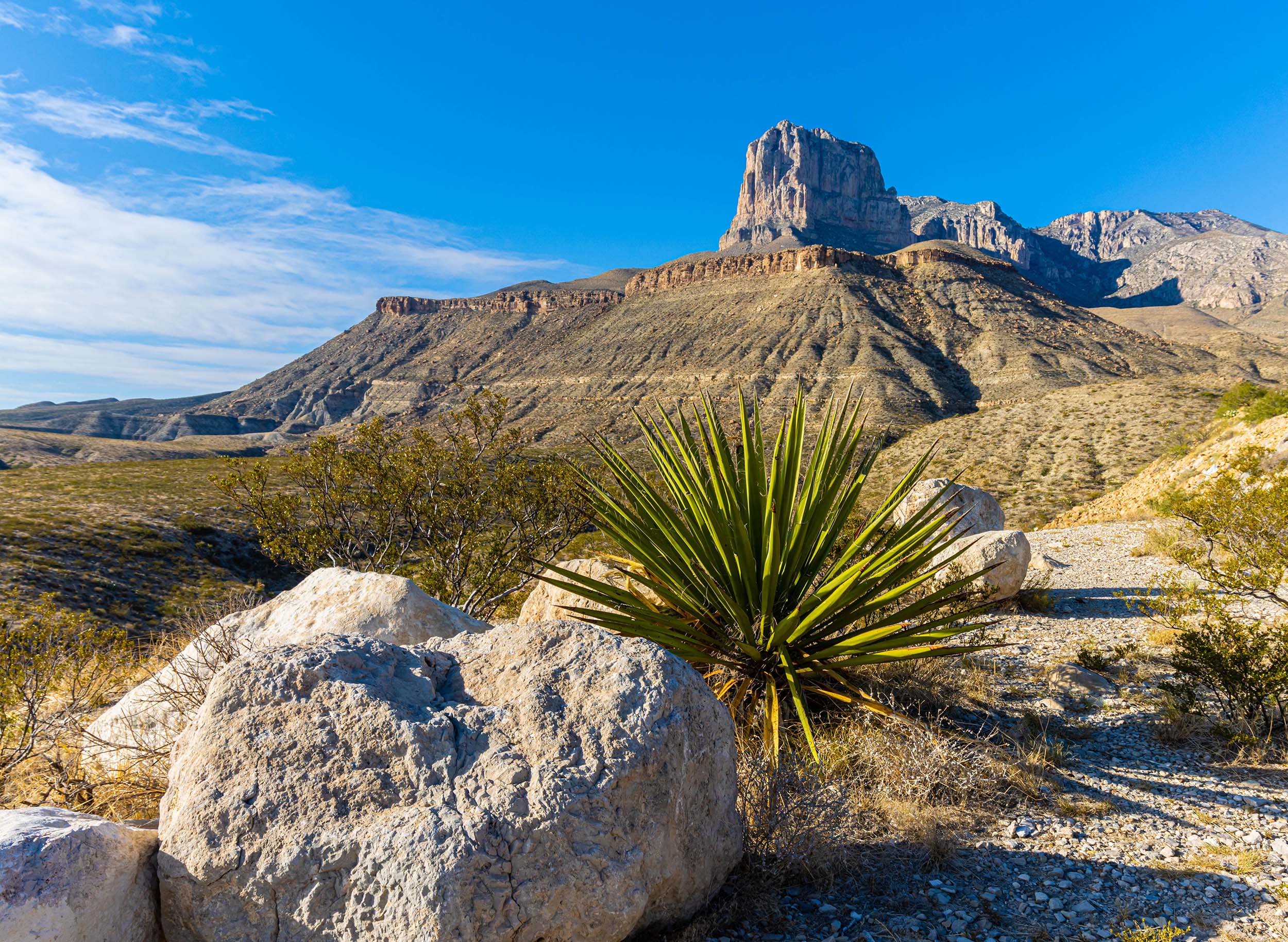
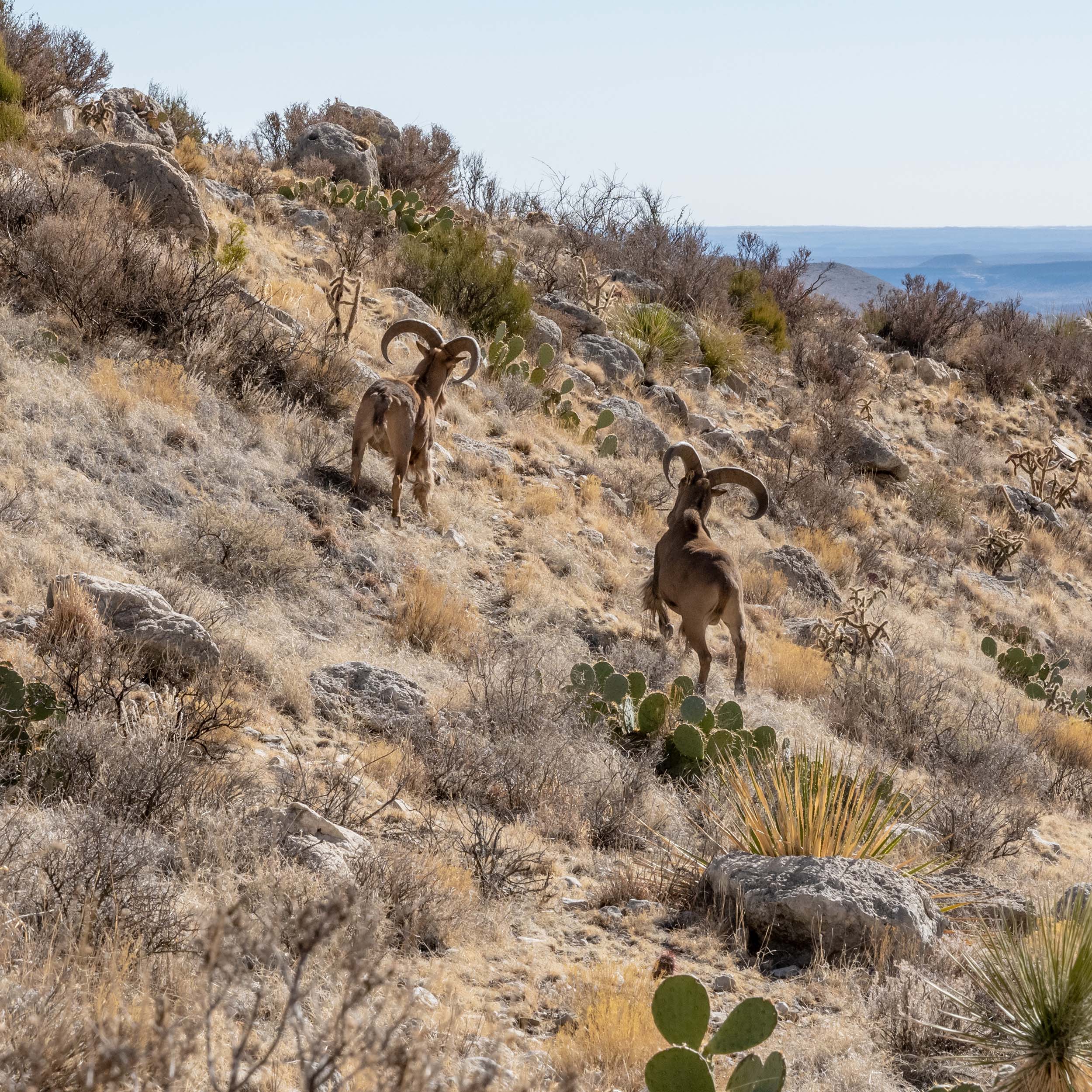
As visitors ascend the park’s higher elevations, the wildlife changes dramatically. In the cooler, forested areas, you may encounter mule deer, which are commonly seen grazing in the park’s woodlands. Mountain lions also roam these higher regions, though they are elusive and rarely seen by humans. These mountain habitats also provide refuge for smaller mammals like the rock wren and the Abert’s squirrel, which are well-suited to the park’s rocky terrain. The park’s mixed forests of oak, pine, and juniper offer shelter to a variety of bird species, including the red-breasted nuthatch and the wild turkey, which are often spotted in the wooded areas during spring and fall.
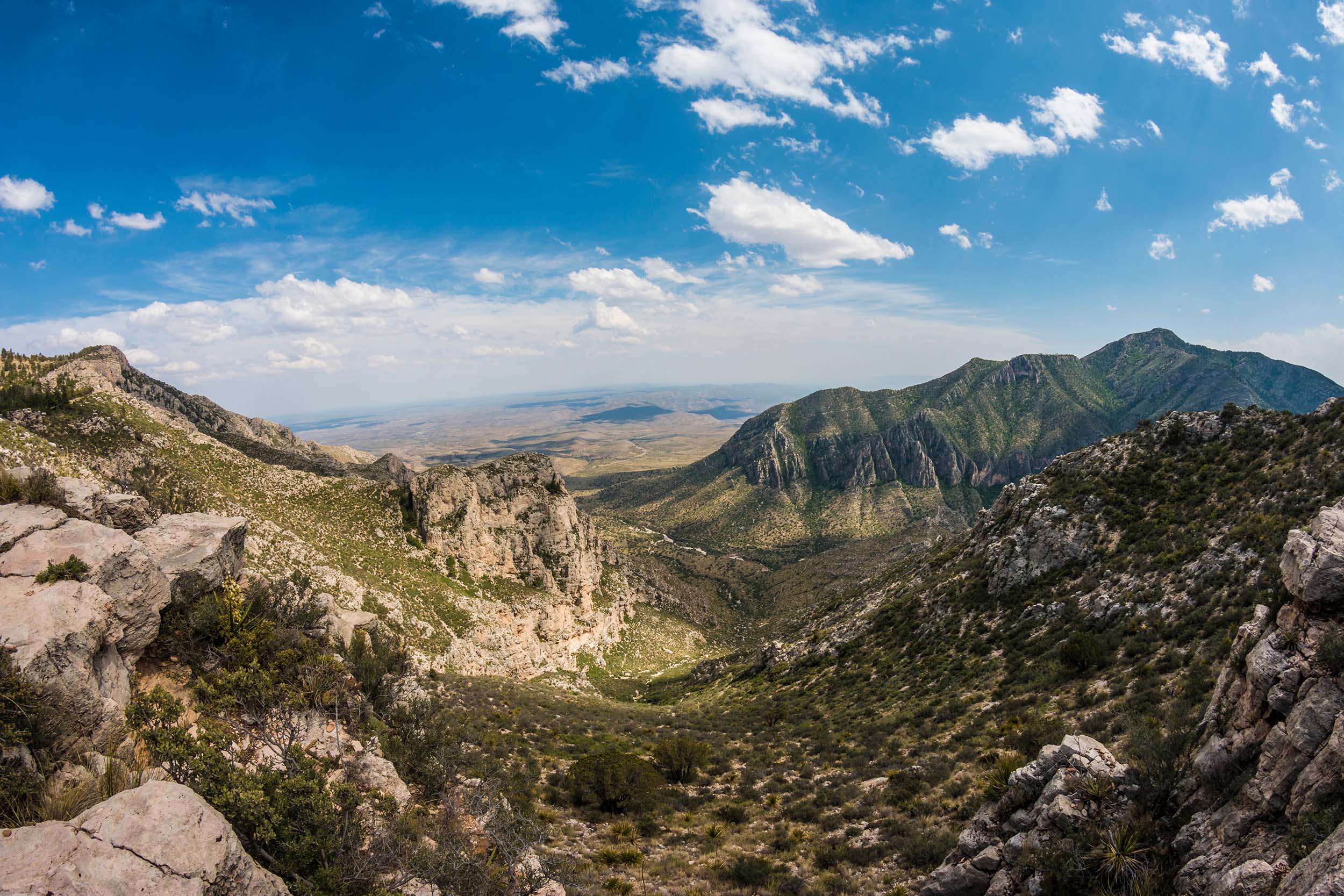
Gear We Used


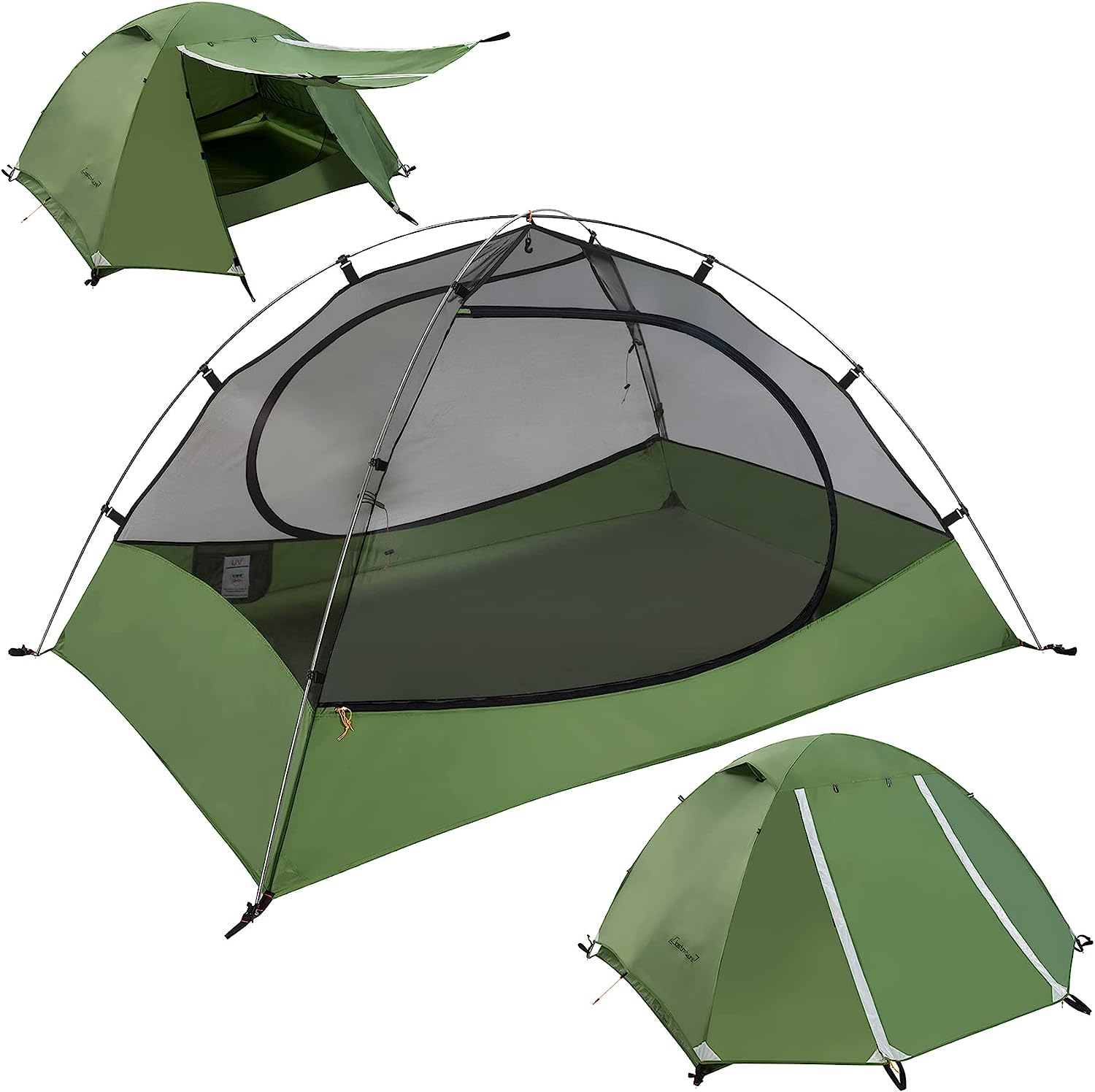


Must-Do Activities
Explore McKittrick Canyon
A visit to McKittrick Canyon is a must for those seeking natural beauty and a bit of history. The 4.8-mile trail follows the scenic creek through the canyon and provides stunning views of the vibrant fall foliage when the seasons change. Hikers can also visit the historic Frijole Ranch and learn about the area’s cultural history. McKittrick Canyon is ideal for those who want a more moderate hike with lush landscapes and rich biodiversity.
Stargazing at Night
Guadalupe Mountains National Park offers some of the darkest skies in the U.S., making it a fantastic destination for stargazing. Whether you’re camping in the park or simply visiting, take the time to enjoy the night sky. The park regularly holds stargazing programs, and on clear nights, visitors can view the Milky Way, planets, and numerous constellations. This activity is perfect for those looking to connect with nature in a unique way and experience the beauty of the night sky in a remote and serene environment.
Hike to Guadalupe Peak
One of the most rewarding activities at Guadalupe Mountains National Park is hiking to Guadalupe Peak, the highest point in Texas. The 8.4-mile round-trip trail takes you through stunning landscapes, culminating in breathtaking 360-degree views from the summit. The challenging hike provides an opportunity to experience the park’s diverse ecosystems and spectacular scenery, making it a must-do for avid hikers and outdoor enthusiasts.
The Guadalupe Mountains National Park History
The history of Guadalupe Mountains National Park is deeply rooted in both natural and cultural significance. The area’s geological history dates back over 250 million years, when the region was covered by an ancient sea. As the sea receded, it left behind vast limestone deposits, which formed the striking mountain peaks and rugged landscapes that define the park today. The Guadalupe Mountains themselves are part of the larger Guadalupe Mountains range, which also includes the famous El Capitan. The park is also home to the remnants of ancient fossils, providing a window into the region’s prehistoric past and offering a glimpse into a time when the area was once a shallow marine environment.
Human history in the Guadalupe Mountains is rich and spans thousands of years. The region was first inhabited by Native American tribes, including the Mescalero Apache, who used the area’s rugged terrain for hunting, gathering, and shelter. European settlers arrived in the mid-1800s, with ranchers and farmers establishing homesteads in the area. One of the park’s most notable historic sites is Frijole Ranch, a homestead dating back to the 1850s. The ranch played a central role in the settlement of the area and offers visitors insight into the lives of early settlers in the region. The remnants of this ranch are now preserved in the park, along with interpretive exhibits that explain the difficult life of ranching in such a remote and challenging environment.





